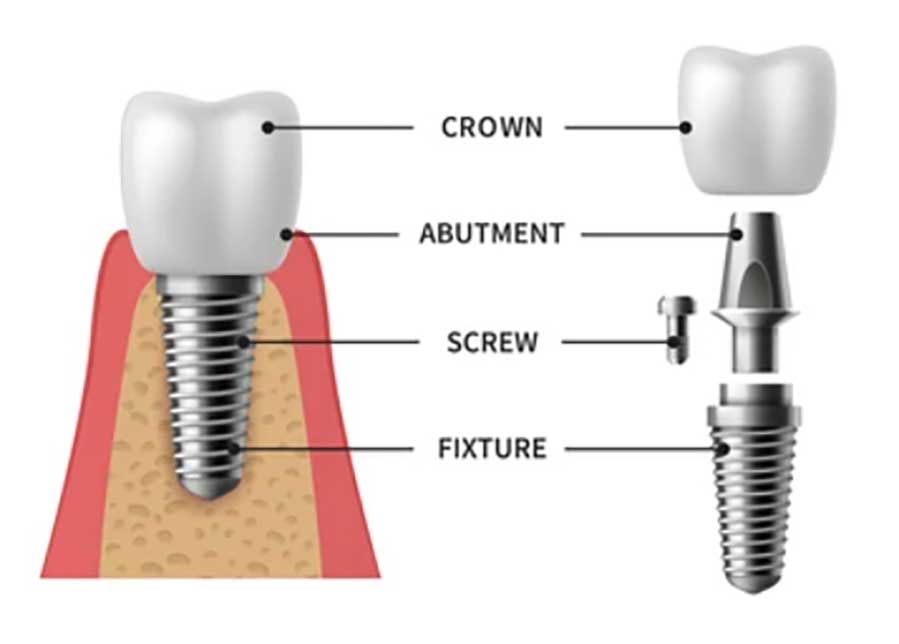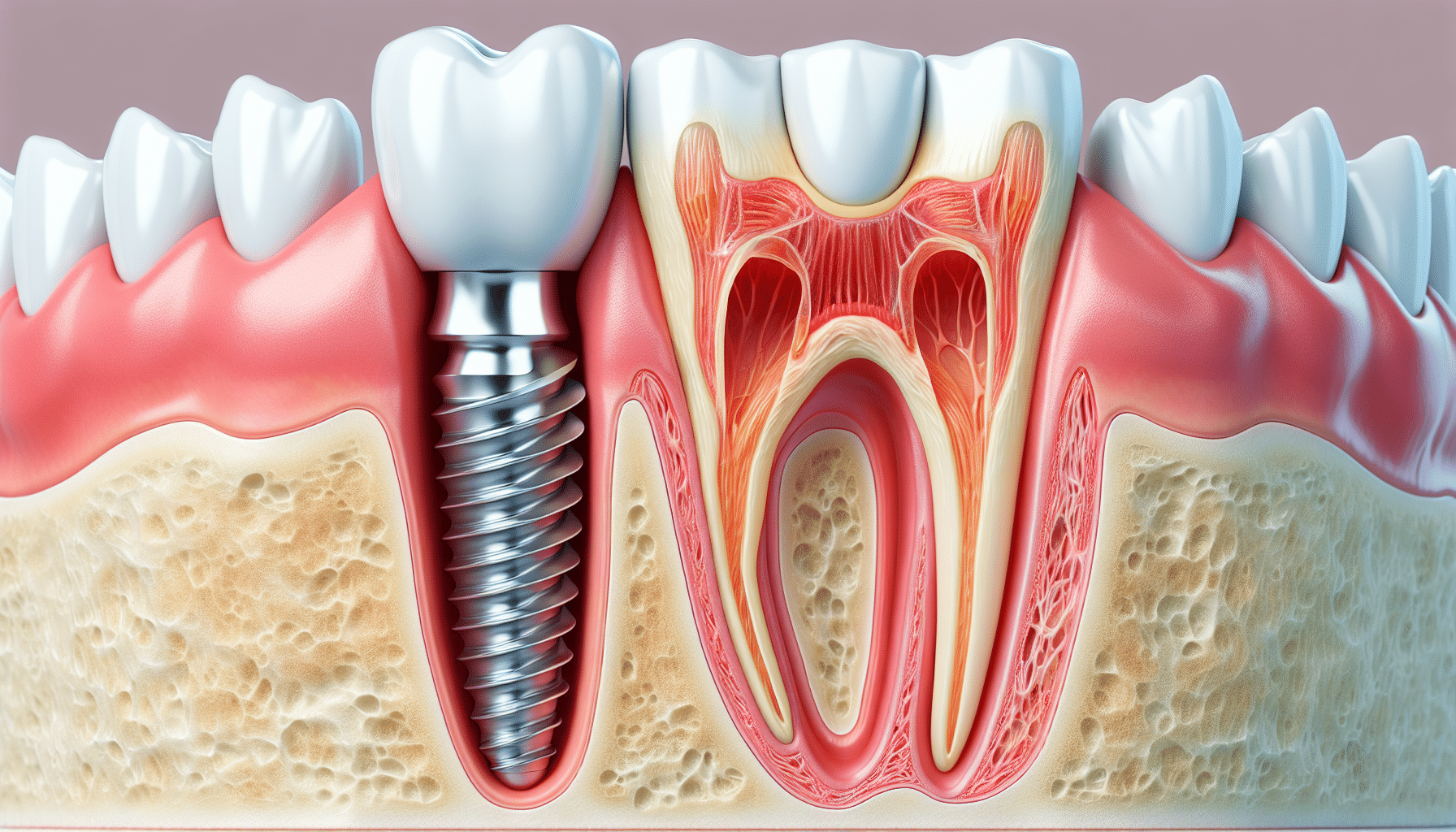Mono Implants New Albany OH Dental Implant Procedures
Mono Implants New Albany OH Dental Implant Procedures
Blog Article
Dental Care Pataskala OH Permanent Dental Implants
Dental implants have revolutionized restorative dentistry, providing a reliable alternative to traditional methods for replacing missing teeth. The integration of dental implants with the jawbone is a fancy organic recommended you read process known as osseointegration. This process not solely anchors the implant securely but in addition you could try this out helps keep jawbone health, stopping the view publisher site bone loss usually associated with missing teeth.
The dental implant itself is typically made of titanium, a biocompatible material that the body accepts. When an implant is positioned within the jaw, it's designed to closely mimic the root of a natural tooth, which is important for efficient integration. The titanium surface encourages the expansion of bone cells, enabling the jawbone to bond with the implant over time.
Dental Center Johnstown OH Single-Tooth Implants: Everything You Need to Know

Several phases represent the osseointegration process. Initially, when the implant is surgically positioned into the jaw, a healing period is required for the encircling bone to start remodeling. During this time, the bone grows across the implant, creating a stable and steady basis. This therapeutic time can range, usually lasting several weeks to a couple months, depending on various factors, together with the person's overall health and the specific location of the implant.
The function of surrounding bone quality is essential. High-density bone sometimes provides a greater surroundings for osseointegration compared to lower-density bone. Specialists usually evaluate the standard and amount of bone before the implant placement to determine the most effective course of action, which may contain bone grafting procedures in instances of insufficient bone quantity. Grafting enhances the possibilities of profitable integration by creating a more strong base for the implant.
The organic mechanisms behind osseointegration contain varied mobile activities. Osteoblasts, the cells answerable for bone formation, migrate to the implanted area and begin to lay down new bone materials. Simultaneously, the surface of the titanium implant undergoes modifications that facilitate this bonding course of. Some newer implant designs incorporate surface modifications to further improve biological integration.
Smile Care Galena OH Dental Implant Procedure: What You Need to Know Before Surgery
Throughout the combination process, the role of blood supply cannot be overstated. An sufficient blood provide nourishes the bone and ensures the correct functioning of the cells concerned in the therapeutic and integration process. Improved blood flow results in faster therapeutic and higher outcomes, which is why surgical techniques and aftercare typically prioritize maintaining or enhancing blood circulation to the site of the implant.
Improvements in surgical strategies also contribute significantly to the success charges of dental implants - Mono Implants Johnstown OH. Minimally invasive strategies and guided implant surgery enable for more exact placement of implants, lowering trauma to the encompassing tissues and potentially speeding up the therapeutic time. The less trauma experienced by the jawbone can result in a extra favorable setting for osseointegration
Pediatric Dentist Columbus OH Frequently Asked Questions About Dental Implants

How an individual maintains their oral hygiene after receiving an implant can considerably affect integration success. Proper care around the implant site helps prevent infections, which might disrupt the healing process. Regular dental check-ups are also vital to observe the health of each the implant and the surrounding gum and bone tissues.
Long-term success with dental implants is often linked to components corresponding to way of life decisions. Patients who smoke or have uncontrolled diabetes may experience lower charges of osseointegration. These conditions interfere with therapeutic and blood supply, making it crucial for people considering implants to discuss their health history with their dentist.
After the successful integration of the implant, the next phase includes putting the prosthetic restoration, similar to a crown. The last restoration should match comfortably and functionally combine with the present dentition. Family Dental Clinic New Albany OH. Proper alignment and occlusion play essential roles in how well the implant will carry out over time
Dental Center Condit OH Are Dental Implants Permanent? What You Should Know
Dental implants present a lasting solution that helps preserve the integrity of the jawbone. When a tooth is lost, the bone that after anchored its root begins to deteriorate. Implants stimulate the bone equally to natural teeth, triggering the jaw to hold up its density and strength. This stimulation is crucial for stopping the sunken facial appearance that often accompanies tooth loss.
In conclusion, the combination of dental implants with the jawbone includes a fancy interaction of organic and mechanical factors. Understanding the osseointegration process can empower individuals to make informed choices about their dental health. By appreciating the significance of selecting a skilled dental skilled and adhering to post-operative care, patients can achieve optimum outcomes and revel in restored operate and aesthetics for a few years to come back.

- Dental implants mimic the structure of natural teeth and provide a steady basis by integrating with the jawbone by way of a process referred to as osseointegration.
- The biocompatibility of titanium, commonly used for dental implants, plays a crucial role in selling profitable bonding with bone tissue.
- Osseointegration usually begins within a number of weeks post-surgery, with the implant surface steadily changing into enveloped by bone cells.
- The mechanical stability of implants is enhanced by their floor roughness, which inspires bone growth and improves the combination course of.
- Immediate loading of implants may be feasible in certain instances, depending on bone density and the patient’s general dental health.
- Over time, the jawbone responds to the presence of an implant by present process reworking, contributing to the long-term success of the procedure.
- Factors similar to oral hygiene, smoking habits, and systemic medical conditions can significantly impact the integration process of dental implants.
- Regular follow-ups and imaging methods, corresponding to X-rays, can help monitor the success of osseointegration and detect potential problems early.
- The preservation of surrounding bone structure is enhanced by the stimulation offered by dental implants, which might help prevent bone loss in adjacent areas.
- Successful integration not solely restores performance to the tooth but in addition contributes considerably to the aesthetics of the patient's smile and facial structure.undefinedWhat are dental implants and the way do they work with the jawbone?undefinedDental implants are titanium posts surgically inserted into the jawbone to function artificial tooth roots. Once placed, they undergo a course of referred to as osseointegration, the place the jawbone naturally fuses with the implant, creating a steady foundation for the replacement tooth.
How does osseointegration occur?undefinedOsseointegration is a organic course of the place bone cells grow and attach to the surface of the dental implant. This typically takes several months, during which the implant becomes firmly anchored in the jawbone, ensuring power and stability for the bogus tooth.
Family Dental Clinic Centerburg OH Dental Implant Surgery: Procedure, Recovery, and What to Expect
What factors influence the success of dental implant integration?undefinedKey components include the quality and quantity of the jawbone, the patient's general health, and oral hygiene practices. Adequate bone density is essential, as insufficient bone may impede successful integration.
Is the pain during dental implant placement significant?undefinedMost patients report minimal discomfort in the course of the procedure, as local anesthesia is used. Post-operative pain is generally manageable with over-the-counter pain reduction medications, and most discomfort subsides within a few days.
How long does the integration process take?undefinedTypically, osseointegration takes about three to 6 months. However, this will vary based on particular person healing processes and the particular conditions of the jawbone.
Can anyone get dental implants?undefinedMost people are candidates for dental implants; nevertheless, certain conditions similar to uncontrolled diabetes or severe gum disease could affect eligibility. A thorough evaluation by a dental skilled is important to determine suitability.
Dental Center Columbus OH Dental Implant Procedure: What You Need to Know Before Surgery
What can be accomplished if there is not enough jawbone for integration?undefinedIf there is inadequate bone, procedures like bone grafting could be carried out to augment the jawbone. Once the graft heals, dental implants can then be placed, permitting for successful integration.
Are there long-term care issues after getting dental implants?undefinedYes, sustaining excellent oral hygiene is significant for the longevity of dental implants. Regular dental check-ups and cleanings additionally assist prevent complications and make certain the ongoing health of the surrounding bone and gum tissue.
Dentist Sunbury OH Full Mouth Dental Implants: An In-Depth Overview
How do dental implants examine to different tooth replacement options?undefinedDental implants are often thought-about superior to dentures and bridges as a outcome of their sturdiness, stability, and the preservation of jawbone health. Unlike different choices, implants fuse with the jawbone, which helps keep bone density and facial structure.
Report this page